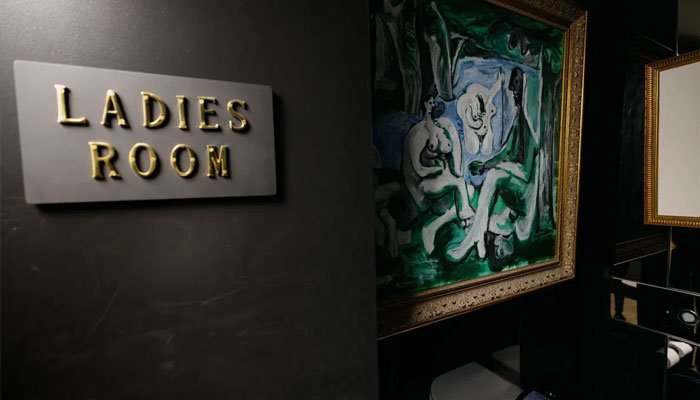Paris Museum Displays Picasso Works in Ladies’ Restroom, Sparks Debate
In a surprising development, a Paris museum has chosen to display Picasso artworks in a ladies’ restroom, creating a unique art experience. This unconventional decision has attracted significant attention and sparked lively discussions about art presentation.
Firstly, the museum, renowned for its innovative exhibitions, has installed a selection of Picasso’s sketches and prints in the restroom. By opting for this unusual setting, the museum aims to challenge traditional art norms and encourage visitors to rethink how and where art can be enjoyed. Consequently, this choice stands in stark contrast to the typical gallery environment.
Upon entering the restroom, visitors immediately encounter Picasso’s distinctive art style. For instance, the installation includes various sketches and prints, each carefully framed to complement the restroom’s decor. Moreover, these artworks are positioned at eye level, which allows visitors to appreciate the details closely. This method, therefore, deviates significantly from the sterile, formal setting of conventional galleries.
Furthermore, visitors’ reactions to the installation vary widely. Many express delight and curiosity about seeing such celebrated works in this non-traditional space. They appreciate the museum’s creative approach, which introduces a playful and intriguing element to their experience. As a result, the restroom display makes Picasso’s art more relatable and engaging.
Conversely, some critics argue that placing high-profile art in a restroom could diminish its perceived value and significance. They question whether this approach respects Picasso’s legacy and the traditional reverence associated with his work. Specifically, these critics believe that the restroom setting might distract from the art’s inherent beauty and historical importance.
Despite these mixed reactions, the museum’s initiative has effectively drawn attention and prompted discussions about art accessibility and presentation. In this context, the decision to exhibit Picasso’s work in a restroom represents a bold effort to challenge conventional art norms and provoke thoughtful conversations among visitors.
Looking ahead, the museum plans to maintain this unique display for several months before rotating it to other parts of the collection. This rotation strategy, therefore, forms part of the museum’s broader goal to continually refresh its exhibitions and offer new experiences. By experimenting with various presentation methods, the museum aims to engage its audience consistently.
Additionally, this approach aligns with a broader trend in the art world, where institutions explore alternative spaces and presentation methods. Such innovations seek to make art more relatable and accessible to a wider audience. Consequently, this trend underscores a growing movement towards inclusivity and creativity within the cultural sector.
In summary, the display of Picasso’s pieces in a museum restroom has generated both excitement and controversy. It represents a bold experiment in art presentation, challenging traditional norms and inviting viewers to engage with art in new and unconventional ways. As the museum continues to explore creative approaches, it remains committed to fostering meaningful dialogue and enhancing the public’s relationship with art.
